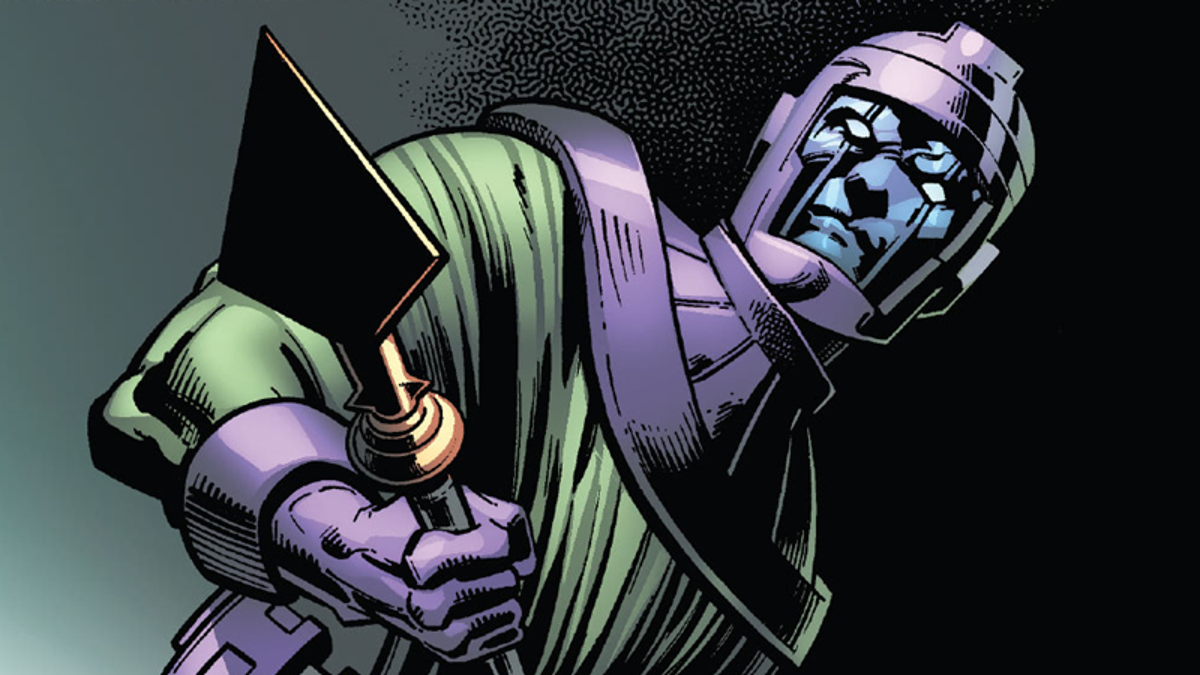
The Conqueror is having a moment. Nathaniel Richards is the star of a new one-shot this week, which is right after helping to establish the multiversal concept that currently holds court in the cinematic universe in Loki. One of those things could be the shocking arrival in the world of the comic books.
The book is a character study of what really makes the Conqueror tick and features art from Kev Walker, Greg Land and Jay Leisten, and Mark Bagley and Andrew Hennessy. A sort of twisted take on Doctor Who with more woolly mammoth wrestling, the issue sees Kang scoop up Anatoly Petrov for an adventure across time and space. It is an adventure that is meant to show the peak of humanity overcoming impossible odds across temporal reality to prove that he is one of the greatest superpowered beings in all of existence. In reality, it is just as pointless as his love of thrill-seeking challenge, and it turns out that he has found a thesis on 21st century supervillainy that would dare to name Victor Von Doom as a villain.
The temporal genitalia-waving contest is interrupted when thepirate timeline attempts to save itself by stitching itself back on to the main timeline. When we learn that the potential instigator of the timeline crisis might be a version of Victor, we and Petrov alike are treated to flashes of stories to come. None of these are of particular interest to Timeless #1. Instead, it saves its most shocking and cryptic visions for its final page, when it's clear that all is well and done, and then drops him back in his own time with some... severe notes about his book. There is a vision that burned into Petrov's mind that is not of stories we've seen teased in Marvel solicits, but of an icon that no one in the universe really understands: two M's stacked on top of each other.
The superheroic emblem of Miracleman, Michael Moran, a reporter who is endowed with vast cosmic power, is a symbol that is unknown to the denizens of the Marvel universe. The character started out in the 1950s as writer Mick Anglo's attempts to provide a British spin on Captain Marvel, but the legal issues of the time saw the character end its Captain Marvel comics. The black-and-white pages of L. Miller & Son comics in the UK were where Miracleman ran until 1963. The character was reborn in the early ‘80s by Alan Moore, and was one of the earliest mainstream deconstructions of the superhero genre, predating Watchmen. Moore and Davis ended their series in 1984 because of legal pressure from the publishers of the character, and the character was sold to the U.S. publisher Eclipse.
Eclipse began re-releasing the series under a new name and continued with new stories with Neil Gaiman and Mark Buckingham. Eclipse collapsed in the mid ‘90s, but Miracleman was a short-lived return. The work of Neil Gaiman and Todd McFarlane was bought by Image, and a lengthy legal battle for ownership of the work meant that Miracleman faded into obscurity for decades. Anglo sold the rights to the character in 2009, despite having held them for decades. The publisher announced plans to finally reprint both Moore and Gaiman's takes on the character, with Gaiman and Buckingham returning to continue the story they had wanted to create decades prior. It never happened, but it did happen, and it was only for nothing to appear until Timeless #1.
The potential arrival of Miracleman once more, and not just that, but as a character within the existence of the continuity, holds fascinating potential, and it seems like it could draw parallels to a recent attempt to bring an independent superhero story into the canon. The arrival of Michael Moran in the comics universe seems to be a sign of some challenging times ahead for the fabric of Earth-616 and its many multiversal counterparts.
Wondering where our feed went? The new one can be picked up here.
